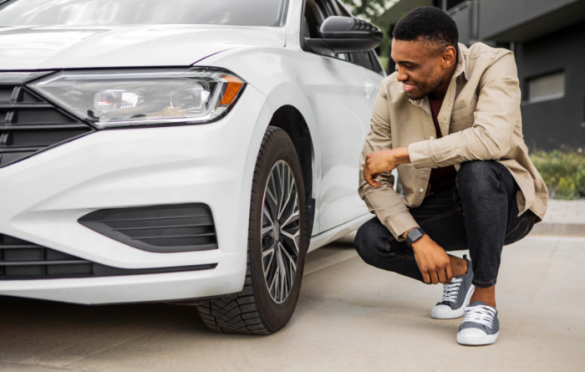Car safety tips you need to know

Published on 31st July, 2024 at 11:46 am
These days, our cars are kitted out with the latest technology and safety features. Yet, accidents can happen when we least expect them, and you should always be prepared for the unexpected. Keep these tips on hand for those unpredictable moments.
Reading time: 3 minutes
In this article, you’ll learn:
- The steps to take if your brakes fail
- The safest way to check your car on the road
- General car safety tips to keep in mind
What to do if your brakes fail
There are many terrifying things that can happen when you’re on the road, but one of the scariest is your brakes failing. After faulty tyres, faulty brakes are the second most common mechanical cause for car accidents, accounting for just over 11% of South African road accidents. In moments like these, it’s essential to be prepared to make the safest stop possible and remain as calm as you can — for yourself and those around you.
Should your brakes fail while driving, there are several steps you can take to safely bring your car to a stop while ensuring your own and others’ safety on the road. According to Safety Brake and Clutch, you should do the following:
- First, pump your brakes a few times. This will flash your brake lights, alerting the driver behind you, and may build up pressure to help slow your speed.
- If this doesn’t work, turn on your hazards to alert other drivers and gear down. This will help naturally slow down the car.
- Next, slowly and carefully inch up your handbrake (not fast like an emergency stop). It will take some time for your car to slow with this method, but you should slowly come to a halt.
- Once you have reduced your speed to below 30 km per hour, pull off to the side of the road and come to a soft stop.
Remember, it’s essential to keep the car on at all times during this process. If you cut the engine, your steering wheel will lock, and you will lose control.
Check out: Cheap car insurance… Is it worth it?
How to practice caution when assessing your car on the road
Stopping on the side of the road is never a good idea, especially when hijacking is a fairly common occurrence, but there are times when it’s unavoidable. In these instances, make sure that you stop in a well-lit, safe location free from road curves or blind spots. Turn on your hazards and use a reflective triangle to increase your visibility. If you are waiting for roadside assistance or help, remain inside the car with the doors locked.
Should you need to change a flat tyre or do a check, always assess your surroundings first and alert loved ones of your current location. Be cautious of strangers offering to help, and use your discretion.
Staying safe while driving
Overall, we could all do with a bit more car safety. As they say, it’s better to be safe than sorry!
No matter where you are parked, ensure you don’t leave any valuables in the car, or items that look like they could have valuables inside, like a shopping bag or handbag. At the very least, ensure they are out of sight and hidden in the glove box or boot. Ensure you park in well-lit, populated areas when on the road, and always check that your car is properly locked. Storing an emergency kit in your car can also be handy, such as a first aid kit, a toolbox, torch, etc.
Lastly, always stay alert! Be aware of your surroundings and practice caution on the road, wherever and whenever you are driving or being driven.
Want to learn more?
We send out regular emails packed with useful advice, ideas and tips on everything from saving and investing to budgeting and tax. If you're a Sanlam Reality member and not receiving these emails, update your contact details now.
Update Now







